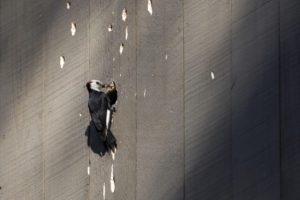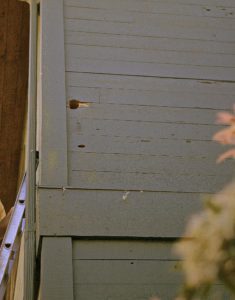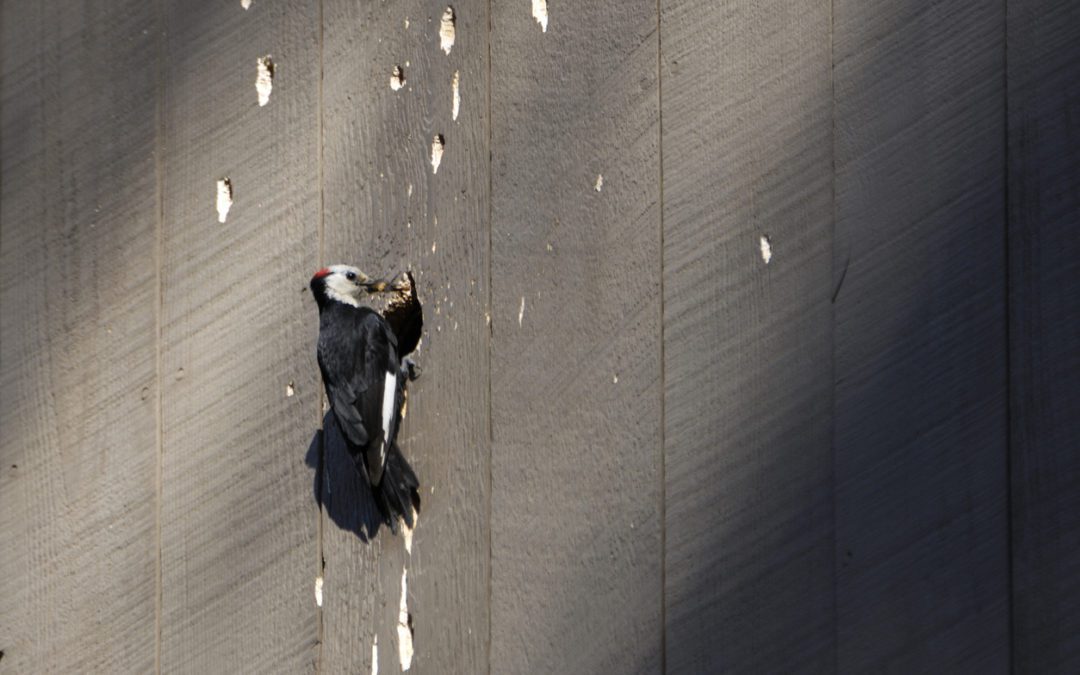Are you hearing a drumming noise on the outside of your house? Have you noticed a bird pecking on your siding or shingles? If so, you might be facing a woodpecker issue. What follows is useful information to help you identify your problem, understand what is causing it, and determine the best solution to avoid woodpecker damage.
What is pecking on the side of my house?
There are several types of woodpeckers native to Illinois. Many species remain year-round, so while you’re most likely to encounter one during warmer
- Downy Woodpecker – The Downy Woodpecker is the species seen most often in our state. It is fairly small – about 6 to 7 inches – and the back of a male’s head has a distinctive red patch. Their bellies are solid white, and their wings are black, marked by white stripes.
- Northern Flicker – Northern Flickers are much larger than the Downy Woodpecker at about 12 to 13 inches in length. Their bodies are mostly brown with black spots on the belly and back, and they have a large black patch on the chest. The males have a red mustache, and the undersides of their wings and tail feathers may be either yellow or red.
- Hairy Woodpecker – The Hairy Woodpecker looks almost exactly like the Downy Woodpecker, but it is slightly larger – 8 to 9 inches long. Its bill is longer and larger than its smaller counterpart, and it lacks the white spots seen on a Downy’s tail.
Why do woodpeckers peck?
- Food – Woodpeckers eat mostly the insects and grubs they find nesting in wood. Their long, bristled tongue is perfect for capturing ants, larvae, spiders, caterpillars, and any other bug that it finds. Homes with wooden siding or shingles may be harboring insects that are attractive to woodpeckers.
- Territory – Perhaps a woodpecker is pecking on your house even though you don’t have wooden siding. Woodpeckers use their drumming both to mark their territory and to attract a mate. They may drum on aluminum siding, gutters, or drain pipes, enhancing the volume of their drilling and warning off other birds.
- Nesting – Woodpeckers prefer to nest in large trees where the centers have been softened and hollowed out by heartrot. These trees are ideal, because they provide protection from predators and insulation from the elements. But if a woodpecker can’t find a suitable tree, it may drill into the side of a house. Buildings provide a similar habitat since an exterior wall is hollow on the inside and solid on the outside.
What do I do if a woodpecker is pecking on my house?

- Where is the animal nesting? – Observe the bird’s behavior as much as you can. It is especially important to note if the woodpecker is just drumming on your house and then flying away or if it is entering a hole in the side of the structure. If there is a hole, it is possible that there are eggs or babies. Once the nest has been vacated for good, the hole must be closed up so other birds and small mammals don’t take advantage of the easy access to your home. You don’t want your woodpecker issue to turn into a squirrel problem. ABC Wildlife technicians have years of experience repairing and animal-proofing areas damaged by a wildlife presence.
- Deterrents – There aren’t any repellents that are effective against woodpeckers, but there are some visual and audial deterrents that have proven helpful. These devices range from the very simplistic to the very complex, and a professional wildlife company will know the safest and most effective way to install the deterrent best suited to eliminate your woodpecker problem.
- Visual – An owl statue is a common example of a visual scare tactic, but unfortunately, it rarely works. For a visual deterrent to be effective, it must be in a constant state of motion so the bird doesn’t become accustomed to it. When hung where the bird is pecking, reflective streamers and balloons are successful at keeping woodpeckers away from a building. The movement in the wind and flashing in the sunlight create a strange and unpredictable obstacle for the bird and will make it hesitant to land on the structure.
- Audial – Sound deterrents have also proven effective at driving away woodpeckers. Speakers that play bird distress calls on a constant loop can be affixed to the home. Just like the visual scare tactics, birds can get used to the distress calls, which means the recording must be changed fairly frequently.
- Preventative Maintenance – If you’re preparing to re-side or re-roof your house, you can help prevent a woodpecker problem by choosing siding or shingles that aren’t made of wood. The wood provides an easier material for the birds to drill into, and it is more likely to harbor insects. Homes that are covered in Dryvit are also extremely susceptible to woodpecker damage. Because the Dryvit is so soft, they’re able to peck large holes into the material without much effort.
If you’re experiencing incessant drumming on the side of your house, call ABC Wildlife today. We are experts in assessing a woodpecker problem and working with you to formulate the best possible solution for your situation. Our technicians are trained in the installation of bird deterrents, and once the animal has been removed, they will be able to repair any woodpecker damage left behind. Don’t wait until you have a house full of holes. Call one of our licensed wildlife professionals at (847) 870-7175 for a consultation with a wildlife expert.


